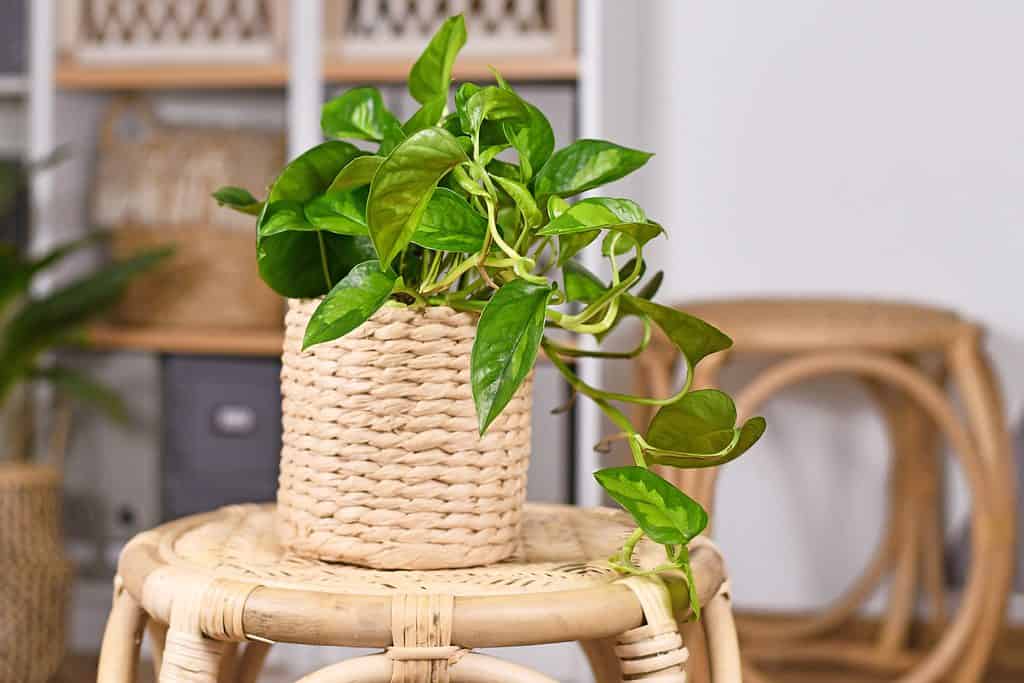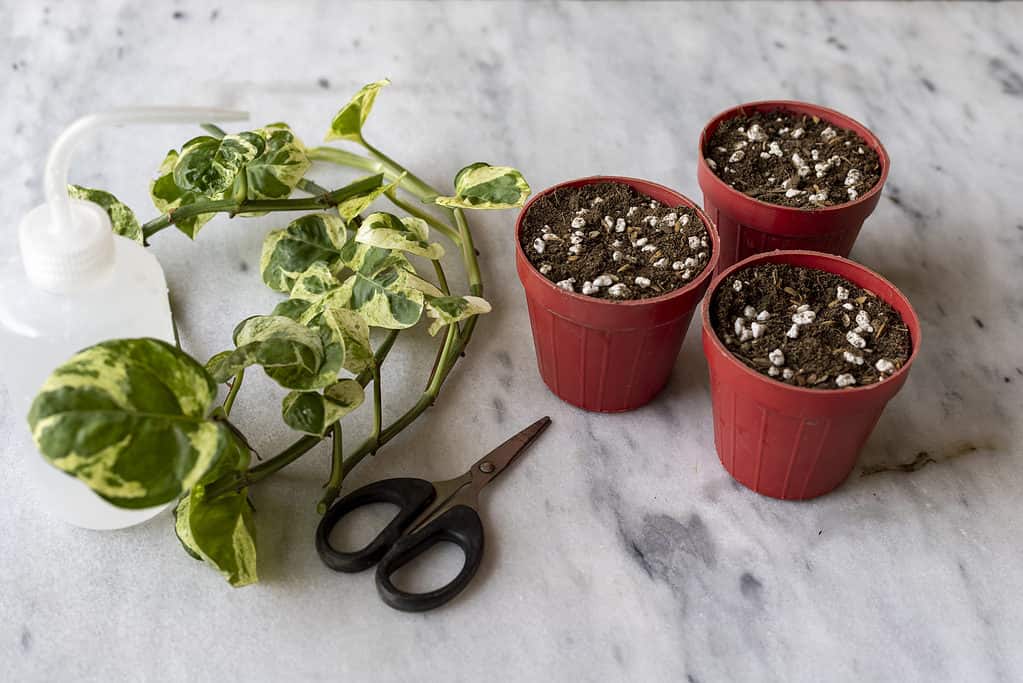One of the most popular houseplants in North America, pothos is beloved for its lovely vines, stunning leaf diversity among cultivars, and resiliency. To add to the upsides of this plant, it’s also super easy to propagate at home. If you’ve never tried propagating a plant, pothos is an excellent choice as it naturally self-propagates as its main reproduction method.
In this guide, we’ll briefly introduce pothos and its natural habitat, and then we’ll break down in five simple steps how to propagate this lovely plant from a stem cutting.
So, without further ado, let’s jump right in!
Pothos: Botanical Classification and Natural Growing Habits
While pothos (Epipremnum aureum) is now a popular houseplant around the world and has become naturalized across many tropical and subtropical regions, it likely originated from a small region of islands in the South Pacific. In its natural environment, pothos thrives by growing as an understory plant beneath the dense jungle canopy of tropical trees. After 10 years of growth in its juvenile phase, this plant enters maturity where it experiences rapid and significant growth. This gorgeous vine can reach up to 65 feet long with leaves that can grow up to 3 feet long.
A master of self-cloning, this plant mostly reproduces when portions of its stem breaks off and grows roots. This method of reproduction is called vegetative reproduction. Rarely, pothos will reproduce by producing flowers that become fertilized by pollinators. Once the flower is fertilized, it develops seeds that are released by the plant to germinate in the soil. However, pothos is known for being a shy-flowering plant due to a lack of a flower-producing hormone called gibberellin. So, it’s far more typical for pothos to reproduce through self-propagation.
Luckily for you, that means you can easily grow more plants by taking the cuttings of the parent plant. Below, we’ll explain what exactly propagation from cuttings is and then walk you through the step-by-step of this process.

A master of self-cloning, pothos mostly reproduces when portions of its stem breaks off and grows roots.
©Firn/Shutterstock.com
What is Propagation from Cuttings?
To successfully propagate pothos by taking a cutting of the plant, it’s important to first understand how growing a plant from cuttings work. So, you can grow a new plant from the stem, woody shoot, leaf, or root of the parent plant. This detached portion of the plant that gives rise to a new clone plant is called a propagule. Gardeners grow these cuttings by placing them in optimal conditions to grow the tissues needed to form a full plant. For plants that aren’t as prone to natural vegetative reproduction, gardeners often add rooting hormones into water or soil to help the detached portion of the plant develop.
Many species don’t take well to growing from a root cutting, and taking a leaf cutting can be finicky and requires both a stem and roots to develop from the leaf. Successful propagation from leaf cuttings is mostly seen with succulents and cacti. For pothos, the best plan of action is to take a cutting from the stem.

For pothos, the best plan of action is to take a cutting from the stem.
©iStock.com/Bilal photos
5 Easy Steps to Propagate Pothos from a Stem Cutting
Thankfully, propagating pothos is quite achievable for all levels of gardeners. People often take cuttings from this plant to grow more in their homes or to share with friends. Additionally, you can take a couple of cuttings from a pothos plant that may not be doing so well, to secure clones if the parent plant doesn’t make it.
Generally, it’s best to take cuttings from pothos during its growing season in the spring and summer, as you’ll see faster root emergence and plant growth. Follow the steps below to get started.
5 Easy Steps
- Prepare a small pot with a well-draining potting mixture. You can mix in perlite and coconut coir into the soil if you’d like to optimize drainage. Water the soil lightly to create a moist environment for the new cutting.
- Pick out a healthy, approximately 6-inch section of your plant’s vine. You’ll notice that each leaf on the vine is connected to a little node connected to the stem. You’ll want to make your cut about a 1/4 of an inch below the bottom node.
- With sterile snips, cut the plant just below this bottom node and then snip off the leaves from the bottom 2-3 inches of the stem. Make sure to keep healthy leaves on the upper portion of the stem.
- Use a pencil or your finger to create a narrow hole and gently plant the bare part of the stem into your potting mix. Note: If you wish, before planting the stem you can lightly coat the bare section with rooting hormones to encourage faster growth. For pothos, this step isn’t necessary, so it’s up to you.
- Place the pot in a warm, humid location with access to bright, indirect sunlight or artificial lighting. It’s important during this initial phase of growth to not let the soil dry out. Just make sure the soil is lightly and evenly moist, but not saturated.
As long as you keep your pothos cutting in ideal growing conditions, roots should start to develop within 2-4 weeks. Once the roots develop from the buried nodes on the stem, you’ll start to see growth on the above-ground portion of the plant.

Roots from your freshly planted pothos cutting should start to develop within 2-4 weeks.
©iStock.com/JulieAlexK
Up Next
- Devil’s Ivy Plant Care: How to Care for Pothos Plants
- How to Repot a Pothos Houseplant
- 10 Bathroom Plants that Absorb Moisture
The photo featured at the top of this post is © DJD_Media/Shutterstock.com
Thank you for reading! Have some feedback for us? Contact the AZ Animals editorial team.






